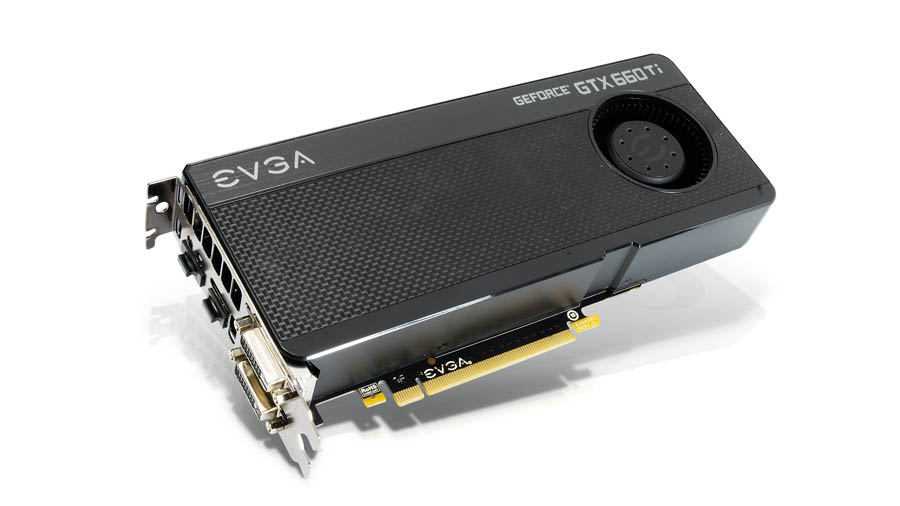TechRadar Verdict
Pros
- +
10-year warranty
- +
Support service
Cons
- -
Too pricey
- -
Lacking grunt
Why you can trust TechRadar
Pricing is such an important part of the graphics card war, the mere 20 quid separating the Asus and EVGA cards actually means a hell of a lot.
When you're operating in such a saturated segment of the market, practically every penny counts. Like the Asus GTX 660 Ti DirectCU II Top card, this Superclocked EVGA GTX 660 Ti is factory overclocked, but because of its policy of cherry-picking GPUs and leaving the reference cooling in place, the EVGA isn't clocked as high.
The card will still regularly top the 1GHz mark in-game, but the extra 65MHz at the base isn't really going to set the gaming world alight. And so it proves in our benchmarks, with the EVGA resolutely coming in behind all the other GTX 660 Ti cards we've seen so far.
That's exactly what you would expect against the more expensive card from Asus, but there are also the Gigabyte and Zotac-shaped thorns in the EVGA card's side. Both cards are practically the same price as the EVGA, but come with higher base clocks among other things.
This also means that it sits behind the similarly priced vanilla AMD HD 7950 in most of our tests - even more so if you bring the latest HD 7950 with Boost into the equation, with its own raised clock speeds.
Benchmarks
DirectX 11 tessellation performance
Heaven 2.5: FPS: Higher is better
EVGA GTX 660 TI SC: 23.7
ZOTAC GTX 660 TI AMP!: 25.4
GIGABYTE GTX 660 TI OC: 24.5
DirectX 11 hi-res gaming performance
Batman: AC: FPS: Higher is better
EVGA GTX 660 TI SC: 48
ZOTAC GTX 660 TI AMP!: 52
GIGABYTE GTX 660 TI OC: 49
Sign up for breaking news, reviews, opinion, top tech deals, and more.
DiRT Showdown: FPS: Higher is better
EVGA GTX 660 TI SC: 20
ZOTAC GTX 660 TI AMP!: 22
GIGABYTE GTX 660 TI OC: 23
Metro 2033: FPS: Higher is better
EVGA GTX 660 TI SC: 13
ZOTAC GTX 660 TI AMP!: 14
GIGABYTE GTX 660 TI OC: 14
DirectX 11 1080p gaming performance
Shogun 2: FPS: Higher is better
EVGA GTX 660 TI SC: 68
ZOTAC GTX 660 TI AMP!: 70
GIGABYTE GTX 660 TI OC: 74
DirectX 10 gaming performance
Just Cause 2: FPS: Higher is better
EVGA GTX 660 TI SC: 47
ZOTAC GTX 660 TI AMP!: 50
GIGABYTE GTX 660 TI OC: 50
Things are pretty close in terms of regular gaming, but when you look at the more compute-focused titles the gap starts to look cavernous.
Where EVGA stands out though is in its excellent support setup and the option to pick up a 10-year warranty for your new GPU. Still, it's the slowest of the current crop and can't make up for that deficit by being a few quid cheaper.
